Cotoneaster Bonsai trees are known for their captivating appearance, making them a popular choice among bonsai enthusiasts. These miniature trees feature small leaves, vibrant flowers, and colorful berries, adding beauty and charm to any space. With various species available, Cotoneaster Bonsai can be grown in different styles, allowing you to create unique and stunning displays.
Key Takeaways:
- Cotoneaster Bonsai is popular due to its attractive appearance and ease of care.
- They have small leaves, vibrant flowers, and colorful berries that add beauty to any space.
- Most Cotoneaster Bonsai prefer full sun with protection from intense afternoon sun.
- Regular watering is necessary, especially during the summer months.
- They should be fed regularly with a balanced fertilizer for optimal growth and fruit production.
Appearance of Cotoneaster Bonsai
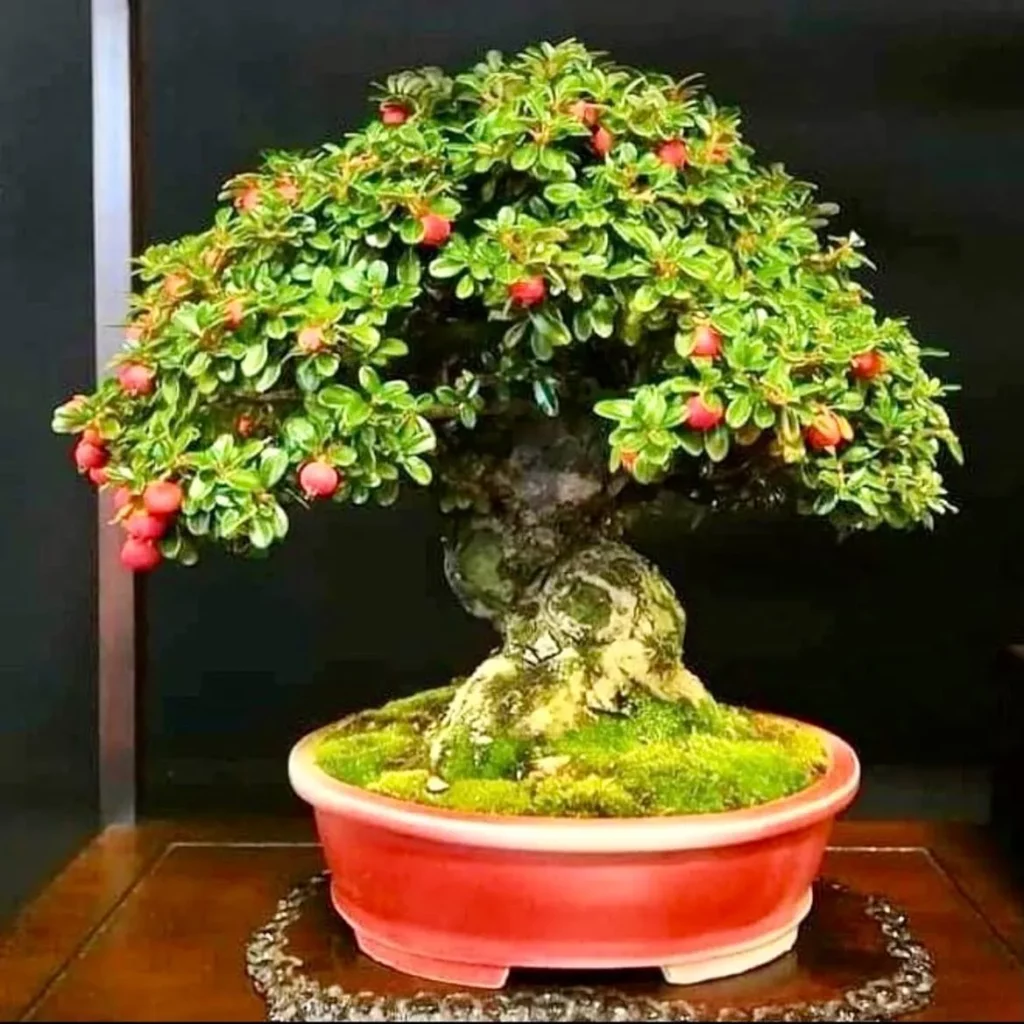
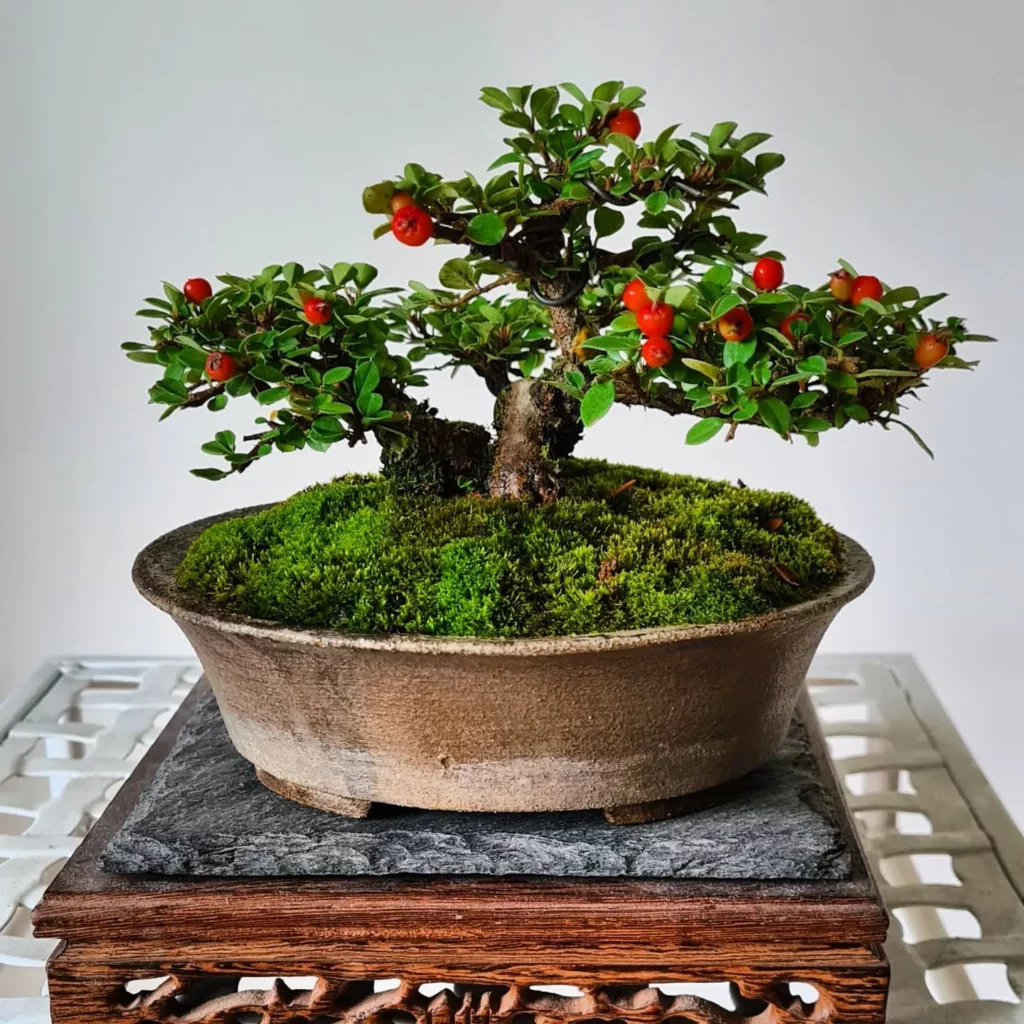
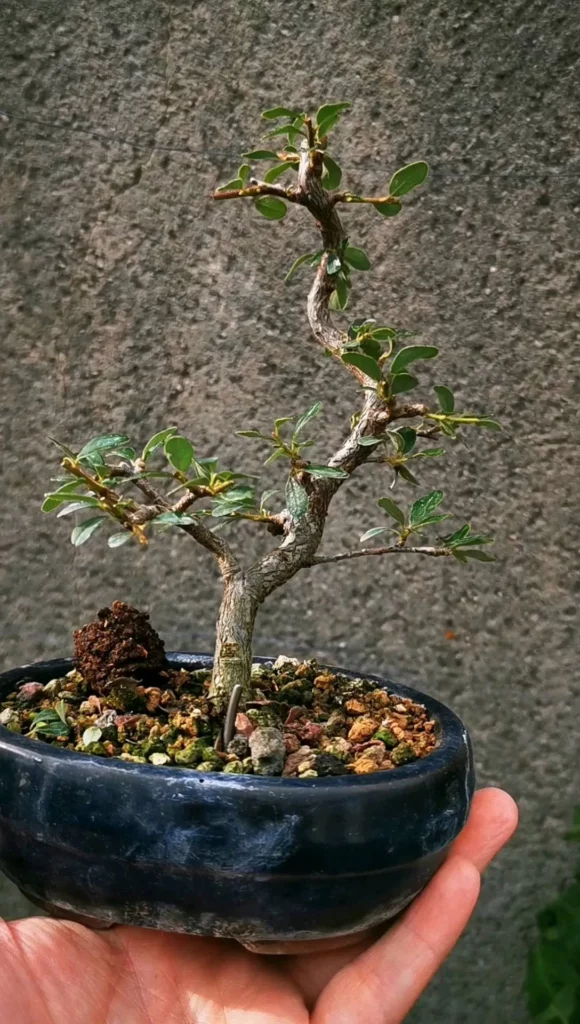
When it comes to the visual appeal of Cotoneaster Bonsai, the possibilities are endless. You can choose to grow them in cascade or semi-cascade style, where the branches gently flow downwards, creating a sense of elegance. For a more upright and traditional look, consider the informal upright style, which showcases the tree’s natural growth pattern.
Another fascinating option is the root-over-rock style, where the bonsai tree grows over a carefully selected rock, creating an eye-catching and dramatic effect. If you’re feeling more adventurous, you can explore the raft style, which mimics a tree growing horizontally across a landscape.
The Key Points:
- Cotoneaster Bonsai trees have small leaves, vibrant flowers, and colorful berries
- They can be grown in various styles such as cascade, semi-cascade, informal upright, root-over-rock, and raft
- Each style offers a unique and visually appealing display
Light Requirements for Cotoneaster Bonsai
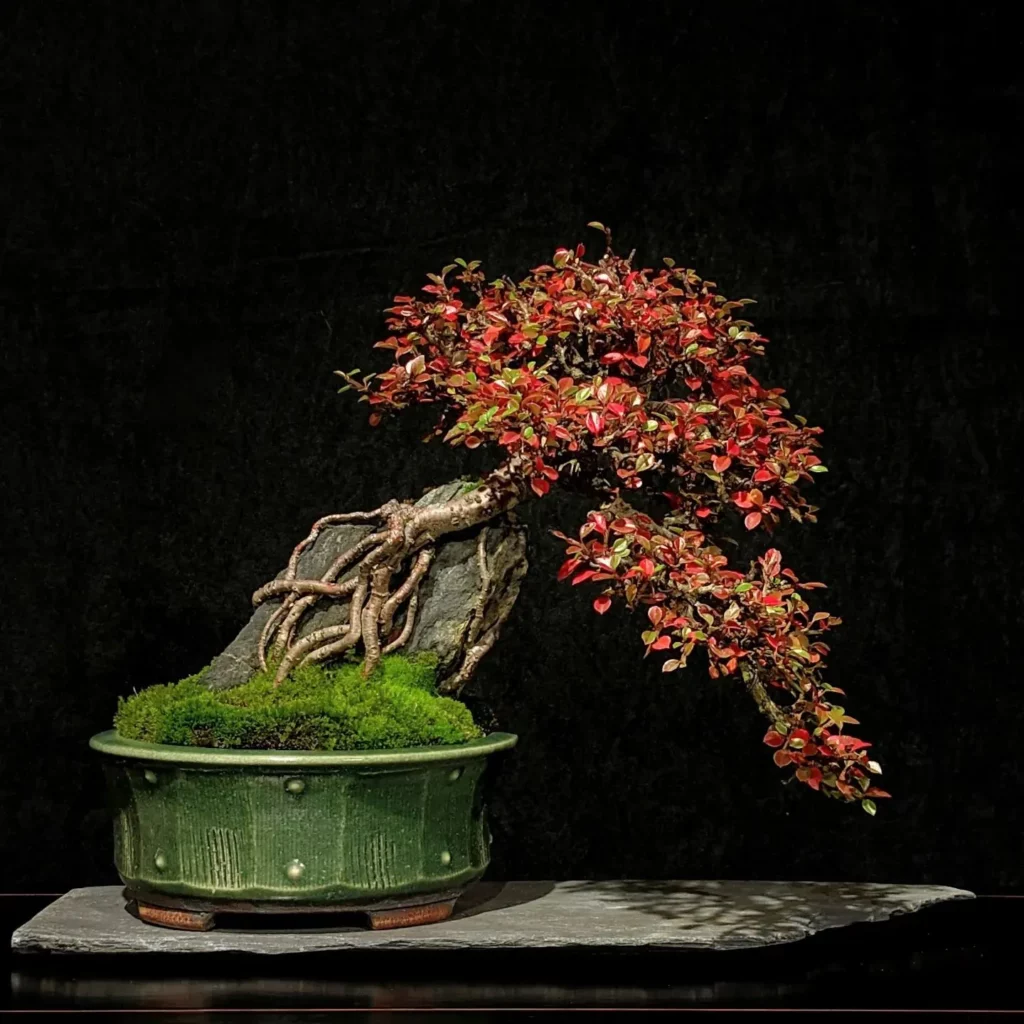
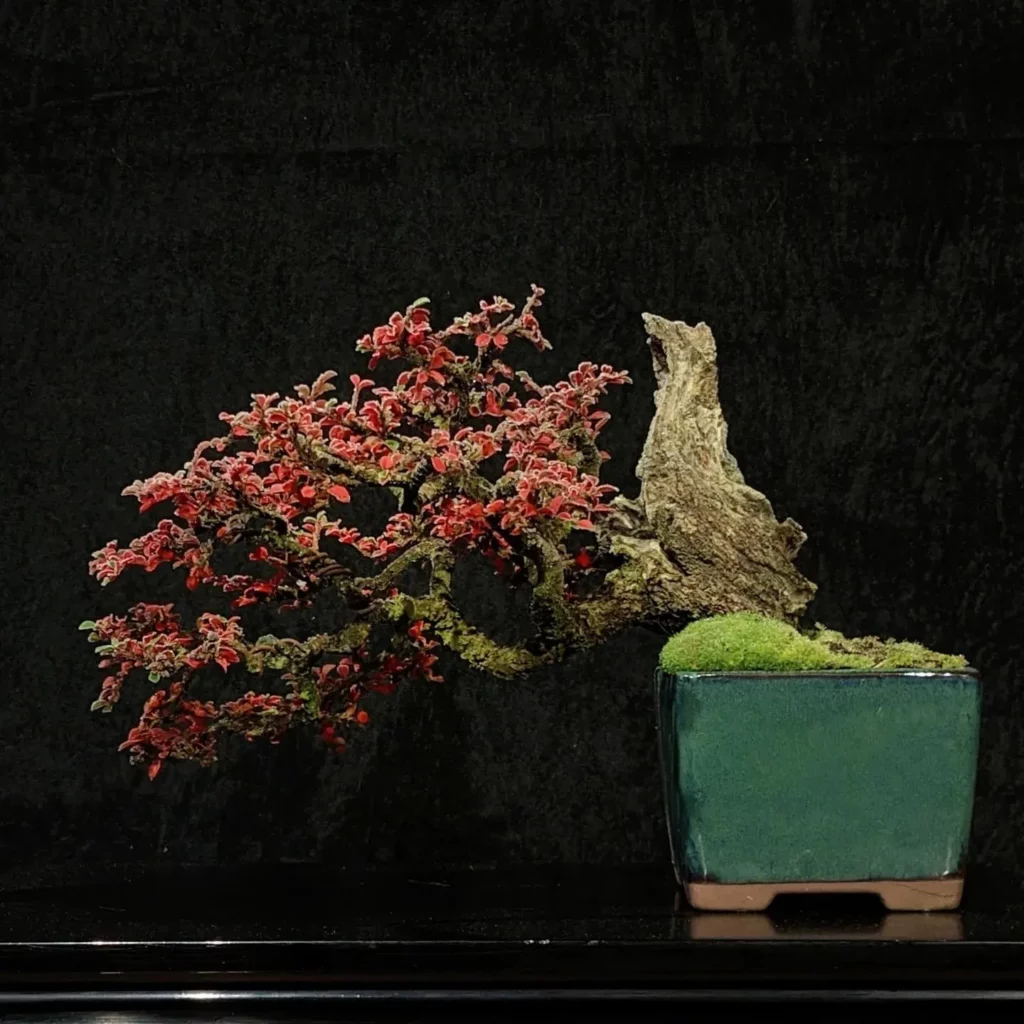
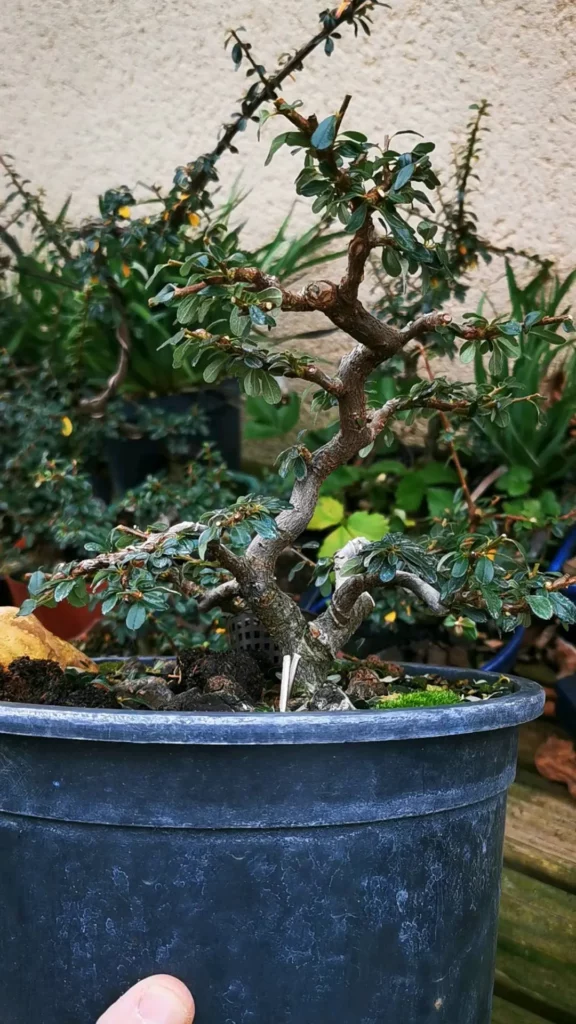
When it comes to the light requirements for your Cotoneaster Bonsai, it’s important to find the right balance. Most Cotoneaster species thrive in full sun during the growing season, but they also need some protection from intense afternoon sun. If you live in an area with hot summer days, providing them with partial shade can help prevent leaf burn. Adequate light is crucial for their overall growth, flower production, and the development of vibrant fall colors.
To ensure your Cotoneaster Bonsai receives the right amount of light, observe its behavior. If the leaves start to appear pale or yellowish, it could be a sign that it’s not getting enough sunlight. On the other hand, if the leaves appear scorched or wilted, it may be getting too much direct sunlight. Adjusting the position of your bonsai in relation to the sun can help strike the perfect balance.
During the winter months, when the Cotoneaster Bonsai enters its dormant phase, it’s important to provide it with enough indirect light. Placing it near a window where it can receive bright but filtered light is ideal. Avoid exposing it to extreme temperatures and drafts, as this can harm the tree.
Here are some key points to remember about the light requirements for your Cotoneaster Bonsai:
- Most Cotoneaster Bonsai species prefer full sun during the growing season.
- Protection from intense afternoon sun is important to prevent leaf burn.
- Partial shade on hot summer days can be beneficial for their well-being.
- Adequate light promotes overall growth, flower production, and vibrant fall colors.
- Observing the behavior of your bonsai can help determine if it’s receiving the right amount of light.
- During winter, provide indirect light near a window and avoid extreme temperatures and drafts.
Watering Cotoneaster Bonsai
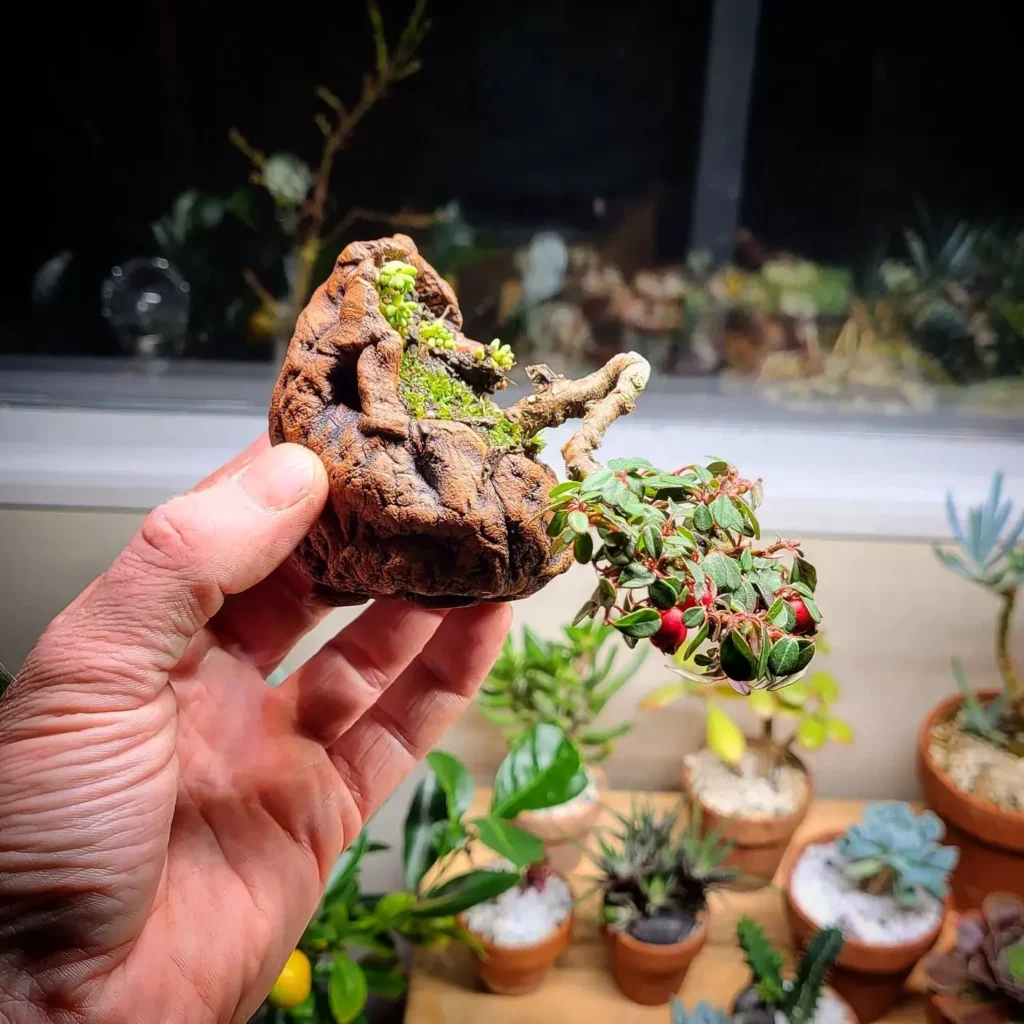
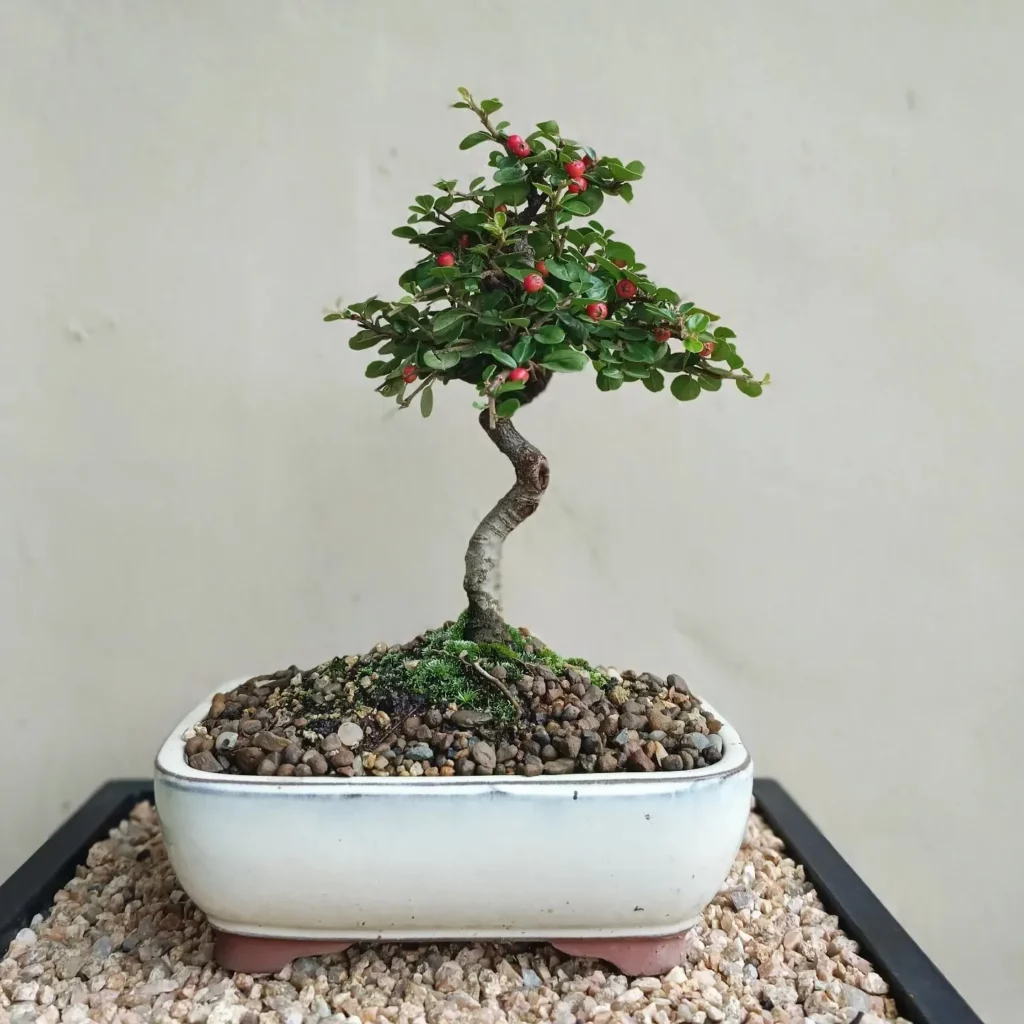
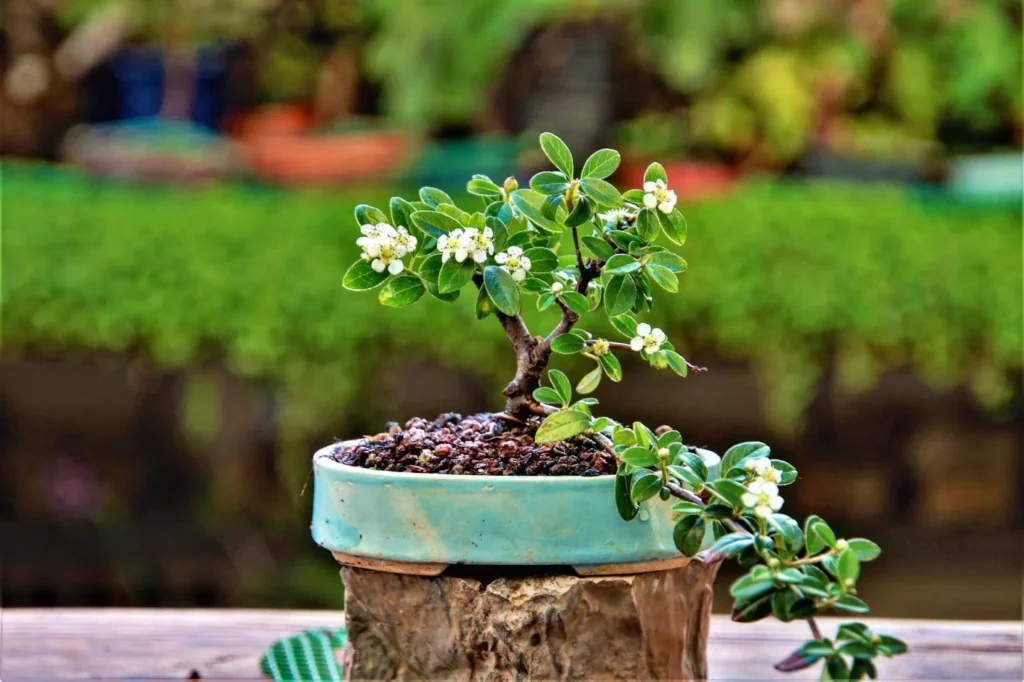
Proper watering is essential for the health and vitality of your Cotoneaster Bonsai. Here are some guidelines to help you ensure that your tree receives the right amount of water:
- Check the soil moisture regularly by sticking your finger about an inch into the soil. If it feels dry at this depth, it’s time to water.
- Water your Cotoneaster Bonsai thoroughly, making sure that the water reaches all parts of the root system.
- Avoid overwatering, as excess water can lead to root rot. Allow the top inch of soil to dry out slightly between watering sessions.
- During hot summer months, when the weather is particularly dry, you may need to water your bonsai more frequently.
- Consider using a moisture meter to accurately monitor the moisture level of the soil.
Fertilizing Cotoneaster Bonsai
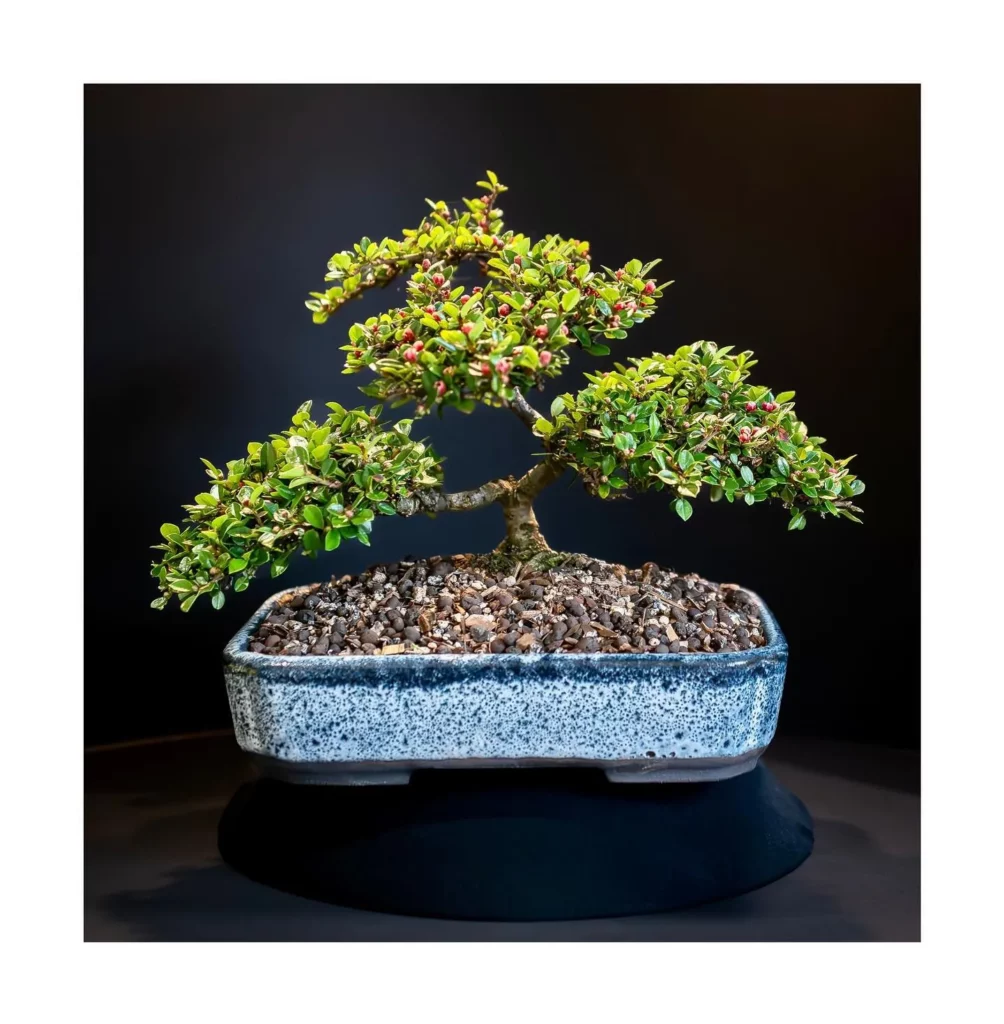

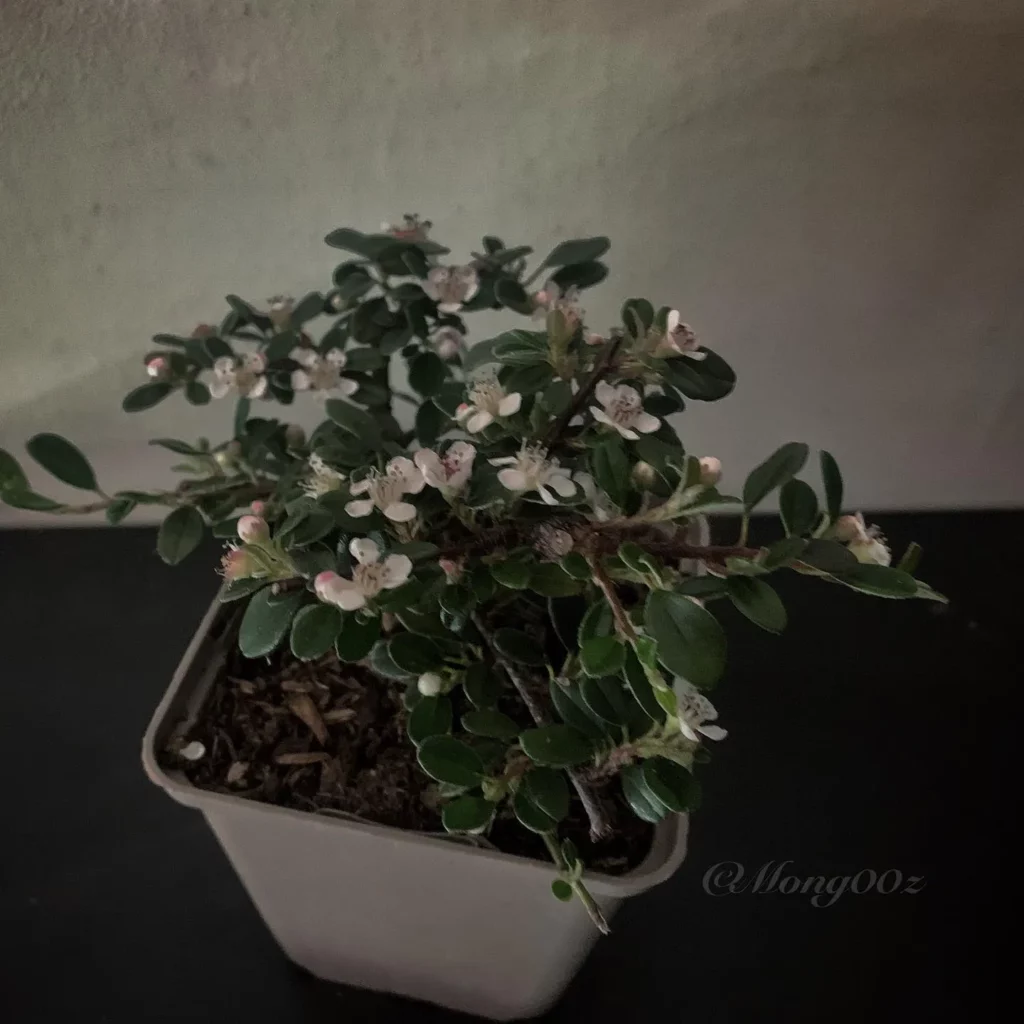
Fertilizing your Cotoneaster Bonsai is essential for promoting healthy growth, vibrant flowers, and abundant fruit production. Here are some key points to keep in mind when it comes to fertilizing:
- Choose the right fertilizer: Use a balanced fertilizer with a ratio of nitrogen (N), phosphorous (P), and potassium (K). Look for a formula specifically designed for bonsai or one that is suitable for flowering plants.
- Frequency of application: During the growing season, fertilize your Cotoneaster Bonsai once a week with a liquid fertilizer or apply a solid organic fertilizer every four weeks. This regular feeding will provide the necessary nutrients for healthy growth and development.
- Apply the fertilizer correctly: Follow the manufacturer’s instructions for the recommended dosage and application method. Be cautious not to over-fertilize, as this can lead to nutrient imbalances and potential damage to the tree’s roots.
Signs of nutrient deficiency
It’s important to be aware of the signs of nutrient deficiency in your Cotoneaster Bonsai. If you notice any of the following symptoms, it may indicate that your tree is lacking essential nutrients:
- Yellowing or discoloration of leaves
- Poor growth or stunted branches
- Reduced flower or fruit production
Potting Cotoneaster Bonsai
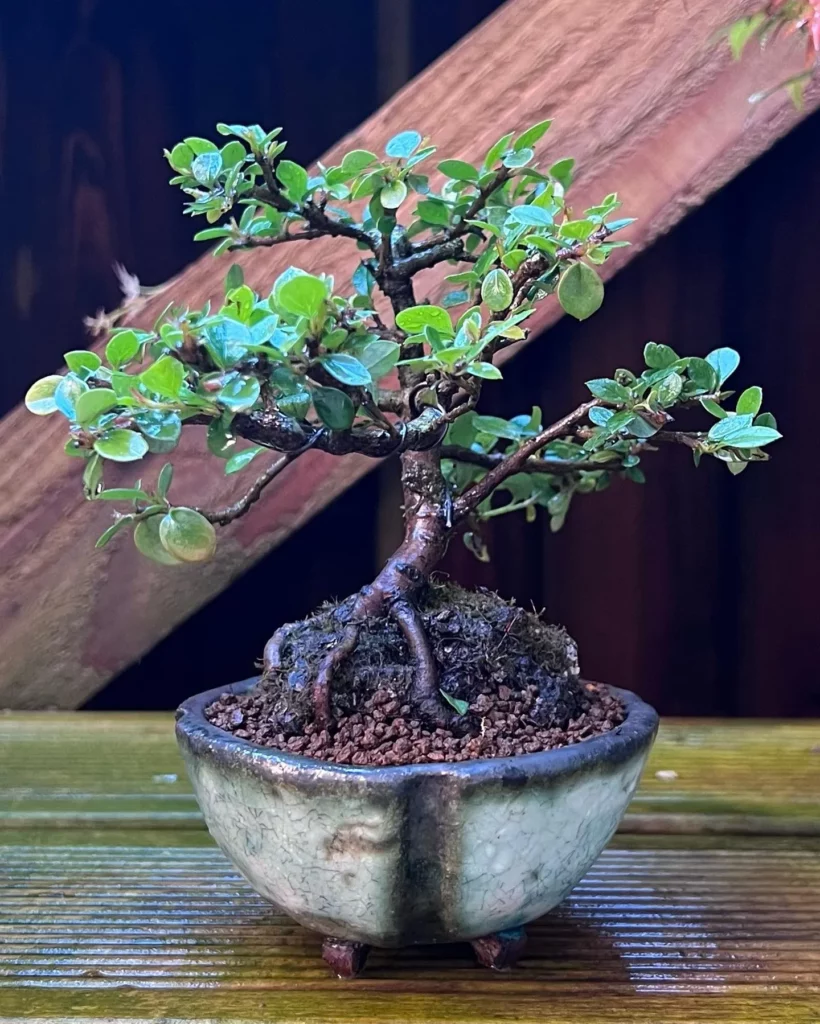
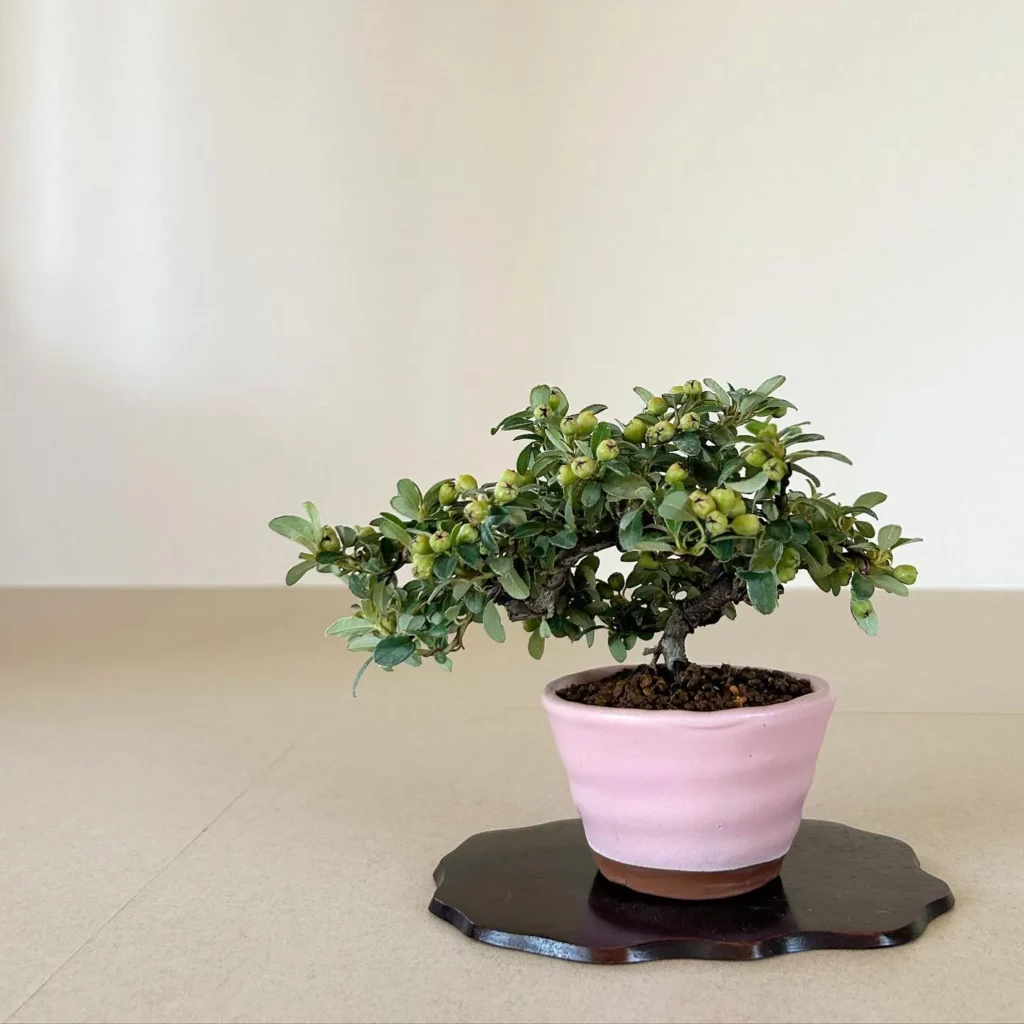
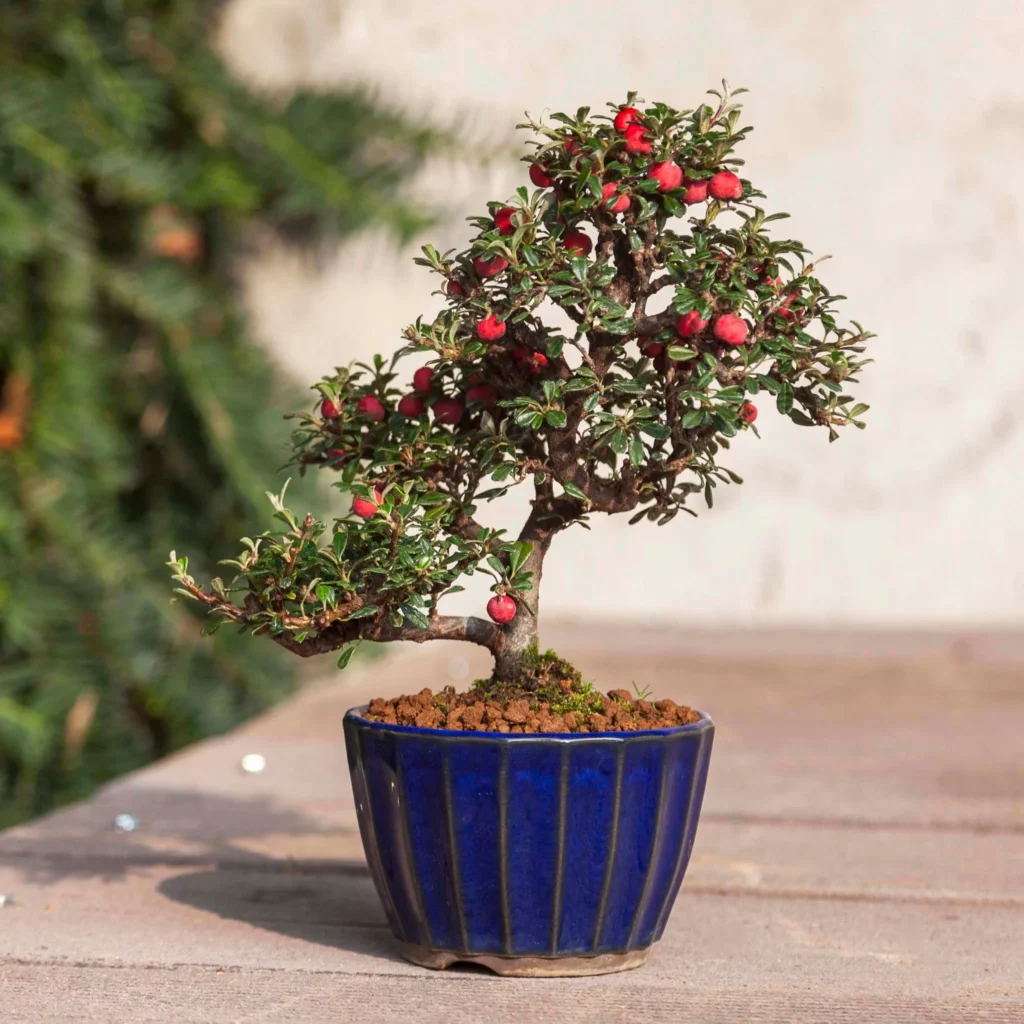
Proper potting is essential for the health and development of your Cotoneaster Bonsai tree. Here are some guidelines to help you with the potting process:
1. Timing:
Cotoneaster Bonsai trees should be repotted in early spring for young trees, while older trees can be repotted every two or three years. It is important to choose the right time when the tree is actively growing to minimize stress during the repotting process.
2. Root Pruning:
During the repotting process, it is necessary to prune the roots of the Cotoneaster Bonsai tree. Carefully remove the tree from its current pot and trim any long or tangled roots. Pruning the roots helps maintain a balance between the size of the foliage and the roots, promoting healthy growth.
3. Soil Mix:
Use a well-draining standard soil mix for your Cotoneaster Bonsai tree. The soil mix should provide good aeration and water drainage to prevent root rot. It is recommended to use a mix of organic matter, such as bonsai soil or a mixture of peat moss, perlite, and pine bark.
4. Pot Selection:
Choose a suitable pot for your Cotoneaster Bonsai tree. The pot should be slightly larger than the current one, allowing room for the roots to grow. Bonsai pots are preferred as they have proper drainage holes to prevent water accumulation.
Propagation of Cotoneaster Bonsai
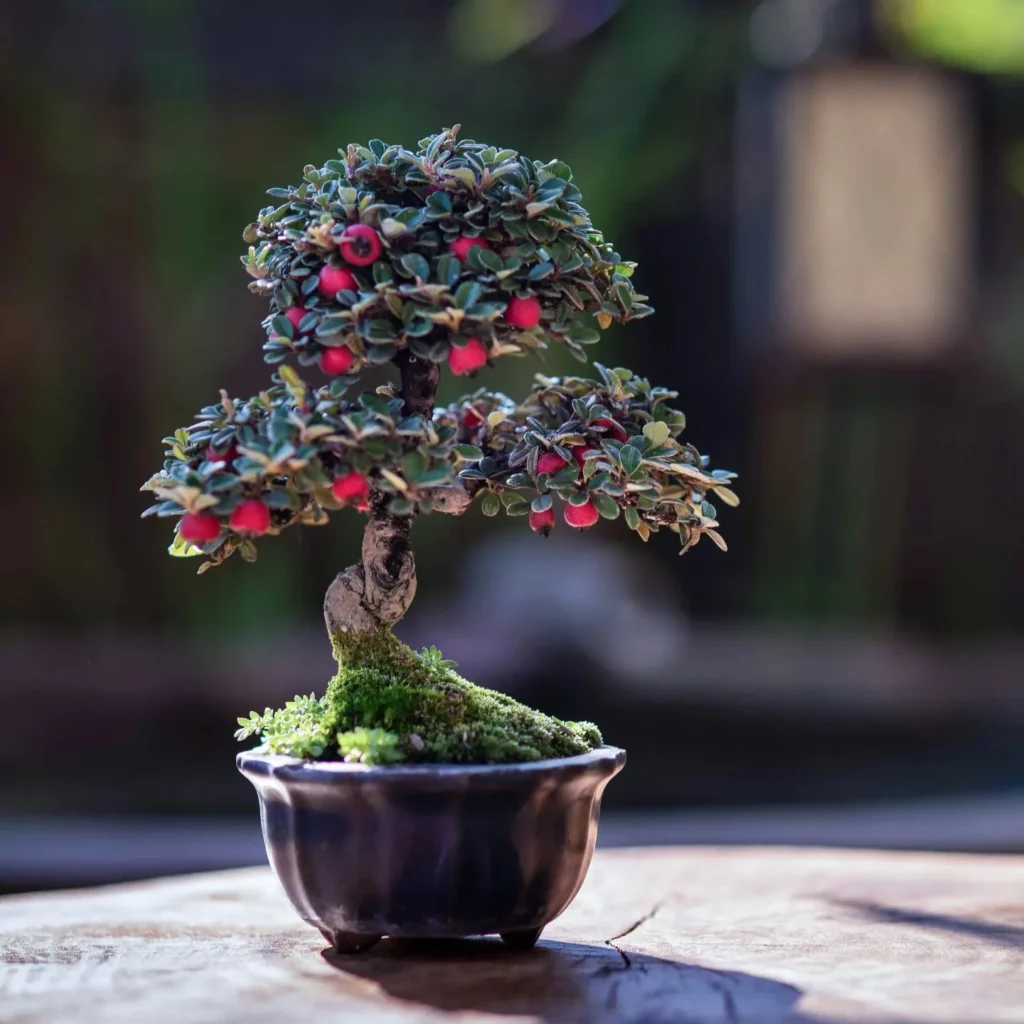
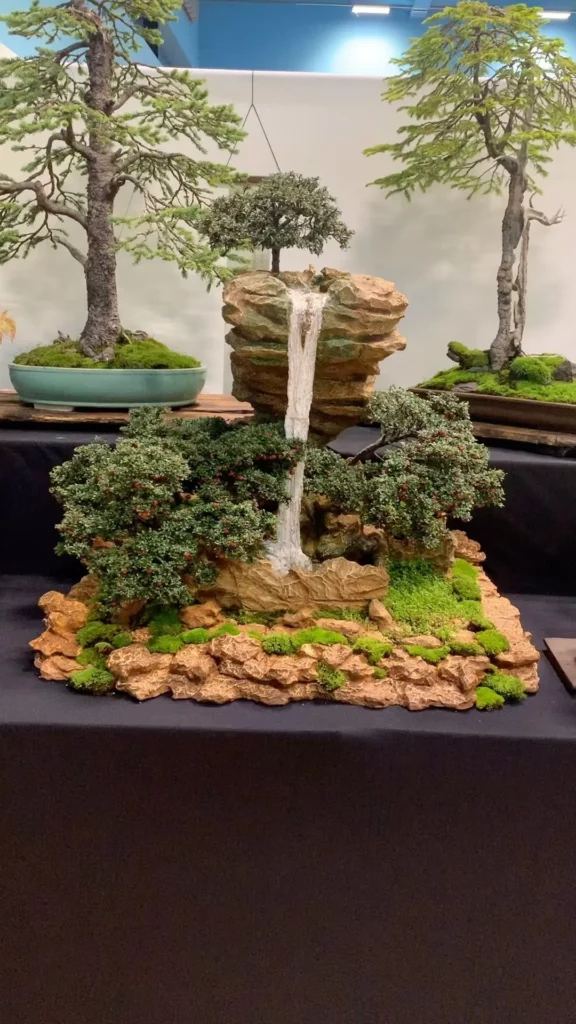
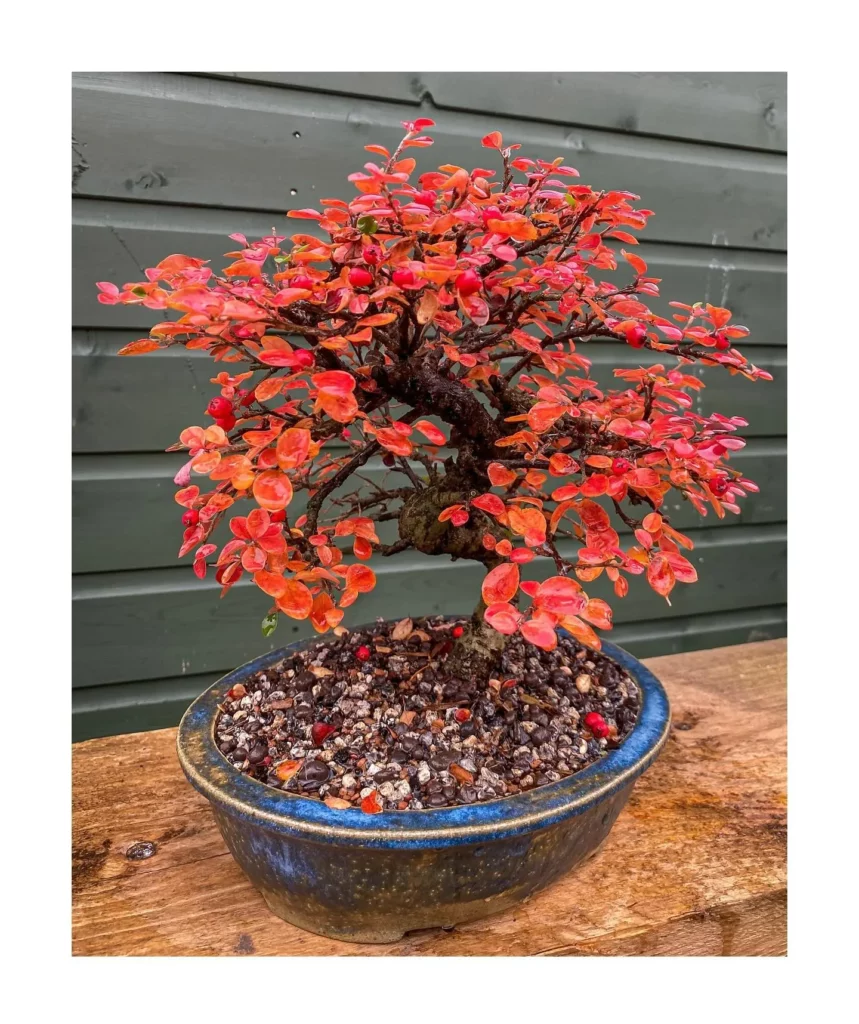
If you’re looking to expand your collection of Cotoneaster Bonsai trees, propagation is a great option. There are several methods you can use to propagate these beautiful bonsai trees.
1. Seed Propagation
One method of propagating Cotoneaster Bonsai is through seed propagation. Collect the seeds in spring and sow them in a well-draining soil mix. Keep the soil consistently moist and provide warmth to encourage germination. With proper care, the seeds will sprout, and you’ll have new Cotoneaster Bonsai saplings to nurture.
2. Cutting Propagation
Another technique for propagating Cotoneaster Bonsai is through cuttings. Take softwood cuttings in mid-summer, making sure they have a couple of leaves attached. Dip the cut end in rooting hormone to promote root development. Plant the cuttings in a well-draining soil mix and keep them in a warm and humid environment. With time and care, the cuttings will develop roots and grow into new Cotoneaster Bonsai trees.
3. Air-Layering
Air-layering is a more advanced method of propagation that can be used on older Cotoneaster Bonsai trees. Select a branch and remove a small section of bark. Apply rooting hormone to the exposed area and wrap it with moist sphagnum moss. Cover the moss with plastic wrap to create a humid environment. After a few weeks or months, roots will form in the moss. Once the roots are well-developed, you can cut the branch below the air-layered section and plant it in a new pot.
Growth and Development of Cotoneaster Bonsai
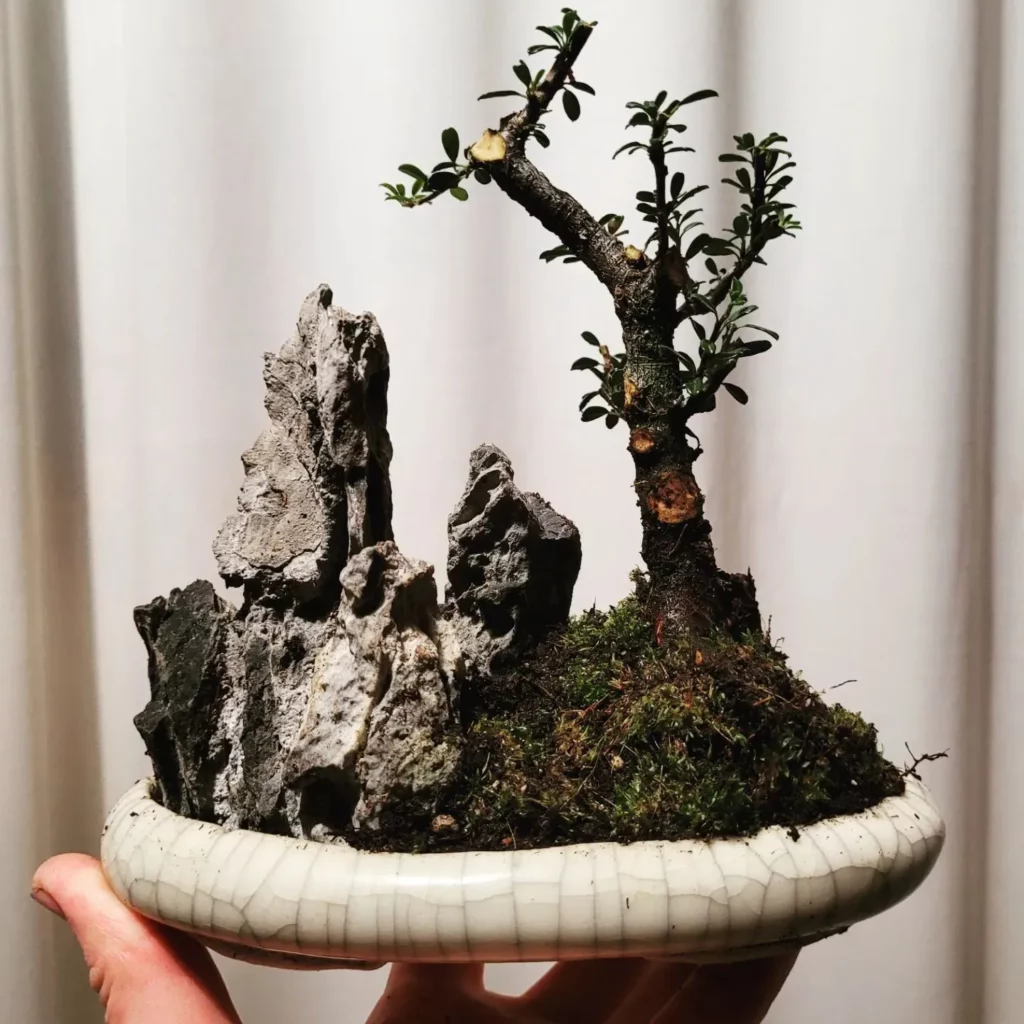
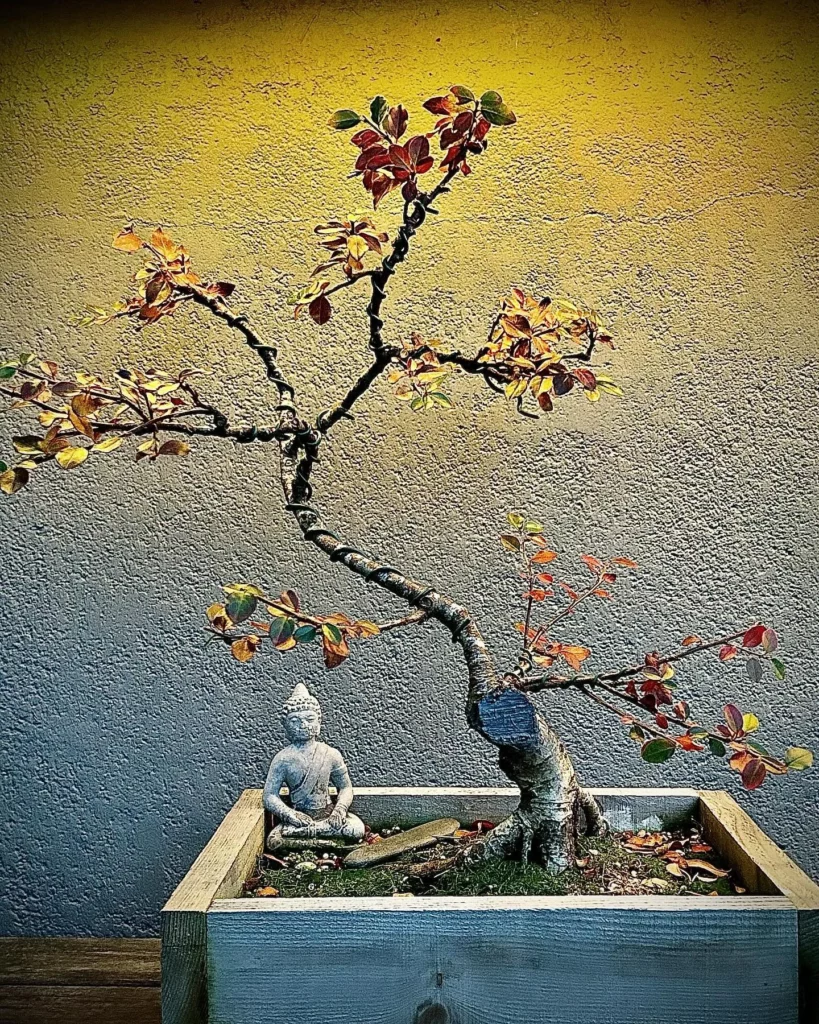
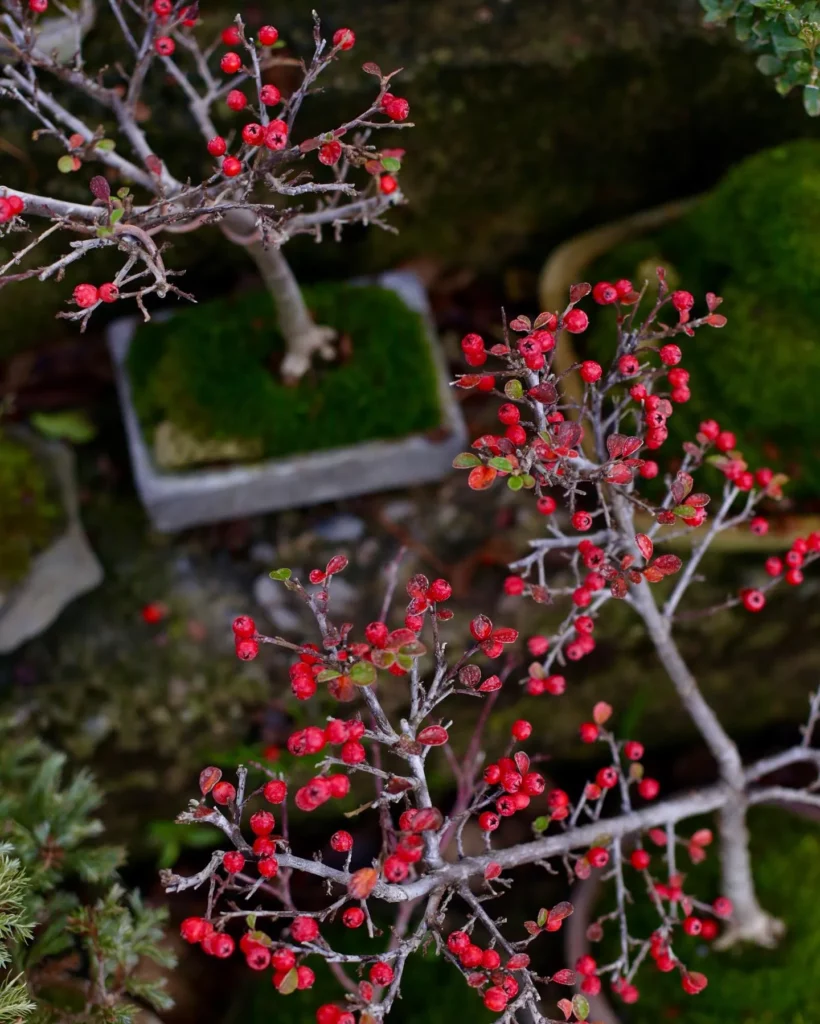
Cotoneaster Bonsai trees exhibit a unique growth pattern that adds to their beauty and charm. With long branches providing structure and short shoots bearing flowers and berries, these bonsai trees have a visually appealing aesthetic. They are also known for their hardiness, being able to withstand various harsh conditions, including drought and strong winds.
In order to promote dense foliage and desired growth, pruning is essential for Cotoneaster Bonsai trees. By carefully trimming and shaping the branches, you can create the desired form and size of your bonsai. Additionally, regular pruning helps maintain the overall health and vigor of the tree.
When it comes to overall development, Cotoneaster Bonsai trees require attention to their specific care needs. Providing them with adequate light, water, and nutrients is crucial for their growth. These bonsai trees thrive in full sun during the growing season but require protection from intense afternoon sun. They can tolerate partial shade on hot summer days.
Promoting Vibrant Fall Colors
To enhance the vibrant fall colors of Cotoneaster Bonsai trees, it is important to provide them with proper care. Adequate light and optimal fertilization with a balanced fertilizer containing phosphorous, potassium, and micronutrients will help ensure beautiful autumn foliage.
Thriving in Various Environments
Cotoneaster Bonsai trees are versatile and can adapt to different climates and environments. They are particularly well-suited for outdoor cultivation, where they can withstand a wide range of temperatures and conditions. Their resilience makes them an excellent choice for bonsai enthusiasts of all levels of experience.
Pests and Diseases of Cotoneaster Bonsai
While Cotoneaster Bonsai is known for its ease of care, it is not immune to pests and diseases. Being aware of these potential issues and taking preventative measures can help keep your bonsai healthy and thriving. Here are some common pests and diseases to watch out for:
Pests:
- Aphids: These tiny insects can suck the sap from the leaves, causing them to curl and turn yellow. Regularly inspect your bonsai for aphids, and if spotted, gently remove them or use insecticidal soap to control the population.
- Scale: Scale insects can attach themselves to the stems and leaves of your bonsai, causing yellowing and stunted growth. Use a soft brush or cotton swab dipped in alcohol to remove them, or apply an appropriate insecticide.
- Caterpillars: These voracious eaters can quickly defoliate your bonsai. Handpick any caterpillars you find or use a safe insecticidal spray to control their numbers.
- Borers: Borers can tunnel into the trunk and branches of your bonsai, weakening its structure and causing dieback. Prevent infestations by keeping your bonsai healthy and regularly inspecting for any signs of borer activity.
- Spider Mites: These microscopic pests can spin webs and suck the sap from the leaves, resulting in yellowing and tiny brown spots. Increase humidity around your bonsai, regularly misting the leaves, and use insecticidal soap or neem oil to control spider mites.
Diseases:
- Fire Blight: This bacterial disease causes wilting, blackening, and dieback of branches. Prune affected areas and dispose of them properly to prevent the spread of the disease. Apply a copper-based fungicide to protect your bonsai.
- Bacterial Blight: Bacterial blight presents as brown spots on leaves and stems, leading to defoliation. Remove and destroy any affected parts, and apply a copper-based fungicide to prevent further infection.
- Powdery Mildew: Powdery mildew appears as a whitish powdery growth on the leaves, affecting their health and vigor. Improve air circulation around your bonsai, avoid overhead watering, and use fungicidal sprays to control powdery mildew.
- Leaf Spot and Root Rot: Leaf spot causes dark spots on the leaves, while root rot leads to decay and wilting of the roots. Prevent these diseases by avoiding overwatering and ensuring proper drainage. Treat infected areas with a fungicide.
General Information about Cotoneaster Bonsai
Cotoneaster Bonsai trees are a popular choice among bonsai enthusiasts due to their attractive appearance and ease of care. These miniature versions of cotoneaster plants offer a unique charm to any space, making them ideal for bonsai, borders, containers, and even espaliered to fences and walls.
Cotoneaster Bonsai trees come in various species, each with its own distinct characteristics. The trees feature small leaves, vibrant flowers, and colorful berries that add beauty and elegance to your bonsai collection. You can choose from different bonsai styles, such as cascade, semi-cascade, informal upright, root-over-rock, and raft, to create a visually stunning display.
Whether you’re a beginner or an experienced bonsai enthusiast, cotoneaster bonsai is a great choice. They are relatively easy to care for and can tolerate a wide range of conditions, including drought and strong winds. They are hardy and resilient, making them suitable for bonsai enthusiasts of all skill levels.
Growing Cotoneaster Bonsai: Quick Tips
- Light Requirements: Cotoneaster Bonsai trees prefer full sun during the growing season, but they also need protection from intense afternoon sunlight. They can tolerate partial shade on hot summer days.
- Watering: Regular watering is essential for cotoneaster bonsai, especially during the summer months. They require a lot of water but can tolerate short drought periods. Avoid overwatering to prevent root rot.
- Fertilizing: Feed your cotoneaster bonsai regularly during the growing season. Use a balanced fertilizer with phosphorous, potassium, and micronutrients to promote flower and fruit production.
- Potting: Young cotoneaster bonsai trees can be repotted annually in early spring, while older trees can be repotted every two or three years. Pruning of the roots is often necessary during repotting.
- Propagation: Cotoneaster bonsai can be propagated from seeds or cuttings. Spring is the best time for seed propagation, while mid-summer is suitable for cuttings.
Best Uses of Cotoneaster Bonsai
Cotoneaster Bonsai trees offer a multitude of uses and can enhance various aspects of your landscape. Here are some of the best ways to incorporate these versatile trees into your outdoor space:
1. Bonsai Display:
Cotoneaster Bonsai trees are a popular choice among bonsai enthusiasts due to their small leaves, intricate branching patterns, and colorful berries. Their compact size and ability to withstand pruning make them ideal for creating stunning bonsai displays that can be showcased indoors or outdoors.
2. Border Plantings:
With their vibrant flowers, attractive foliage, and colorful berries, Cotoneaster Bonsai trees can be used to create beautiful borders in your garden. Whether you want to define the edges of pathways or add visual interest to garden beds, these trees can provide a striking and cohesive look to your landscape.
3. Ground Covers:
Some Cotoneaster Bonsai species, such as the prostrate varieties, have a low-growing and spreading habit, making them excellent choices for ground covers. These cascading trees can effectively cover bare soil, control erosion on slopes, and create a lush and visually appealing ground layer in your garden.
4. Espaliered and Hedging:
If you’re looking to add privacy or create a living fence, Cotoneaster Bonsai trees can be trained into espaliered forms or hedging. Their dense foliage and the ability to tolerate pruning make them well-suited for these purposes. Prune and train the branches to create a desired shape and enjoy the added functionality and beauty of these trees.
Quick Reference Growing Guide for Cotoneaster Bonsai
If you’re looking to care for a Cotoneaster Bonsai, here’s a quick and handy guide to help you along the way. These beautiful trees are easy to care for and can thrive in a variety of conditions. Just follow these simple steps to ensure optimal growth and health for your Cotoneaster Bonsai.
Light and Location
Cotoneaster Bonsai trees prefer full to partial sun. Place your bonsai where it can receive at least 6 hours of direct sunlight each day. However, make sure to provide some protection from intense afternoon sun, especially during hot summer days. This will help prevent leaf burn and keep your tree happy and healthy.
Watering and Moisture
Regular watering is essential for your Cotoneaster Bonsai. During the growing season, make sure to keep the soil consistently moist but not waterlogged. Water thoroughly until the water drains out from the bottom of the pot. In winter, reduce the frequency of watering, but ensure that the roots never completely dry out. Remember, overwatering can lead to root rot, so always check the moisture level before watering.
Pruning and Fertilizing
Pruning is an important part of maintaining the shape and health of your Cotoneaster Bonsai. Regularly remove any dead, damaged, or overgrown branches to promote new growth and maintain a desired shape. Additionally, fertilize your bonsai during the growing season to provide it with essential nutrients. Use a balanced fertilizer every four weeks or a liquid fertilizer every week to encourage healthy flowering and fruit production.
General Care Tips
Finally, remember to repot your Cotoneaster Bonsai every one to three years, depending on its age. Use a well-draining soil mix to ensure proper root development. Additionally, protect your bonsai from pests and diseases by regularly inspecting the leaves and treating any issues promptly. With these simple care guidelines, your Cotoneaster Bonsai will thrive and bring beauty to your space for years to come.
FAQ
Why is Cotoneaster Bonsai a popular choice for bonsai enthusiasts?
Cotoneaster Bonsai is popular due to its attractive appearance and ease of care.
What are the different styles in which Cotoneaster Bonsai can be grown?
Cotoneaster Bonsai can be grown in styles such as cascade, semi-cascade, informal upright, root-over-rock, and raft.
What are the light requirements for Cotoneaster Bonsai?
Cotoneaster Bonsai prefer full sun during the growing season but need protection from intense afternoon sun. They can tolerate partial shade on hot summer days.
How often should Cotoneaster Bonsai be watered?
Cotoneaster Bonsai requires regular watering, especially during the summer months. They need a lot of water but can tolerate short droughts.
How often should Cotoneaster Bonsai be fertilized?
Cotoneaster Bonsai should be fed every week with liquid fertilizer or a solid organic fertilizer every four weeks during the growing season.
When should Cotoneaster Bonsai be repotted?
Young Cotoneaster Bonsai trees can be repotted annually in early spring, while older trees can be repotted every two or three years.
How can Cotoneaster Bonsai be propagated?
Cotoneaster Bonsai can be propagated easily from seeds in spring or from cuttings in mid-summer. Air-layering is also a possible method.
What are the growth patterns of Cotoneaster Bonsai?
Cotoneaster Bonsai trees have long branches providing structure and short shoots bearing flowers and berries.
What pests and diseases are Cotoneaster Bonsai prone to?
Cotoneaster Bonsai can be prone to pests such as aphids, scale, caterpillars, borers, and spider mites. They are also susceptible to diseases like fire blight, bacterial blight, powdery mildew, and leaf spot and root rot fungal diseases.
What are the best uses for Cotoneaster Bonsai?
Cotoneaster Bonsai is often used for bonsai, hedges, ornamental plants, topiary, and controlling ground erosion on banks and slopes.
What are some general information about Cotoneaster Bonsai?
Cotoneaster Bonsai trees have small leaves, vibrant flowers, and colorful berries. They are hardy, suitable for beginners, and available in various sizes.
What are the care guidelines for Cotoneaster Bonsai?
Cotoneaster Bonsai requires full to partial sun, well-draining soil, regular watering, pruning as necessary, and protection against pests and diseases.




